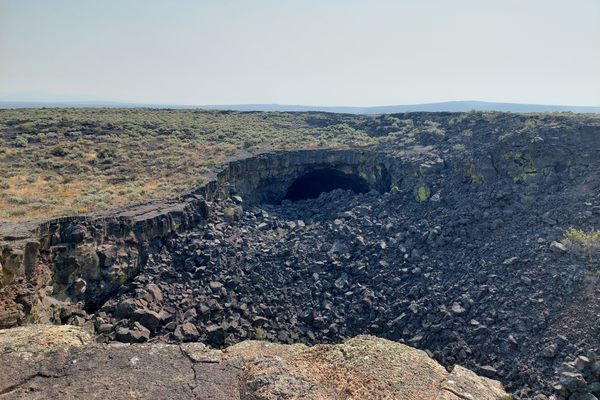About
Almost a quarter of the land of the Northern Hemisphere is permafrost, and about a third of that is in the western half of North America. This includes an area near Fairbanks, Alaska, where the Army Corps of Engineers has a permafrost tunnel as part of the Cold Regions Research and Engineering Laboratory, or “CRREL.”
The CRREL tunnel is roomy, about 360 feet long, six to eight feet high and about 15 feet wide. It’s rich with frozen animal and plant remains, fossils of all kinds, and layers of frozen silt, sand, gravel and bedrock. The space is comprised of an “adit” (just a more impressive word for access portal) and a “winze” (a term used in mining to describe sections that adjusts for differing levels or depths), and given its Army Corps parentage, it’s a feat of engineering.
The tunnel started out in the early 1960s as a kind of training camp, for the Corps to learn more about excavating permafrost. In the later 1960s, it was used for similar purposes by the Bureau of Mines to test permafrost mining techniques. Ultimately though, the tunnel has proven its value as a science lab, turning the exposed walls into a frozen classroom on how permafrost behaves, how fossils and sediment have piled up over the epochs, and how the layers may be altered by climate change.
Permafrost is simply a frozen state of ground, not necessarily icy (although it can include ice in its makeup). It’s defined by temperature, not water content, so if the ground—be it soil, rock, peat, sand or river sediment—maintains a temperature of zero degrees Celsius or lower, you’ve got permafrost.
The exposure caused by tunneling has created a paradoxical engineering dilemma for the Corps: how to keep it frozen when outside air is circulating throughout. CRREL has figured that out too. In the winter there is a system of funneling the outside air back in. In the summer, they’ve got some very fancy A/C.
Related Tags
Know Before You Go
This site is not accessible to the public.
Community Contributors
Added By
Published
November 17, 2016





































